Kneading is a common and distinctive behaviour that you have probably seen performed by your pet cat a number of times.
If you’ve seen your cat kneading (something that resembles a baker kneading a ball of dough or ‘making biscuits’ as vets sometimes call it) you may be wondering why they are doing this.
Contents
The Reasons Why A Cat May Knead Are:
- To encourage their mother’s milk to flow.
- To spread their scent.
- To check nothing is hiding in their sleeping spot.
- To calm themselves down.
- Because they are in heat.
- To help them loosen their muscles.
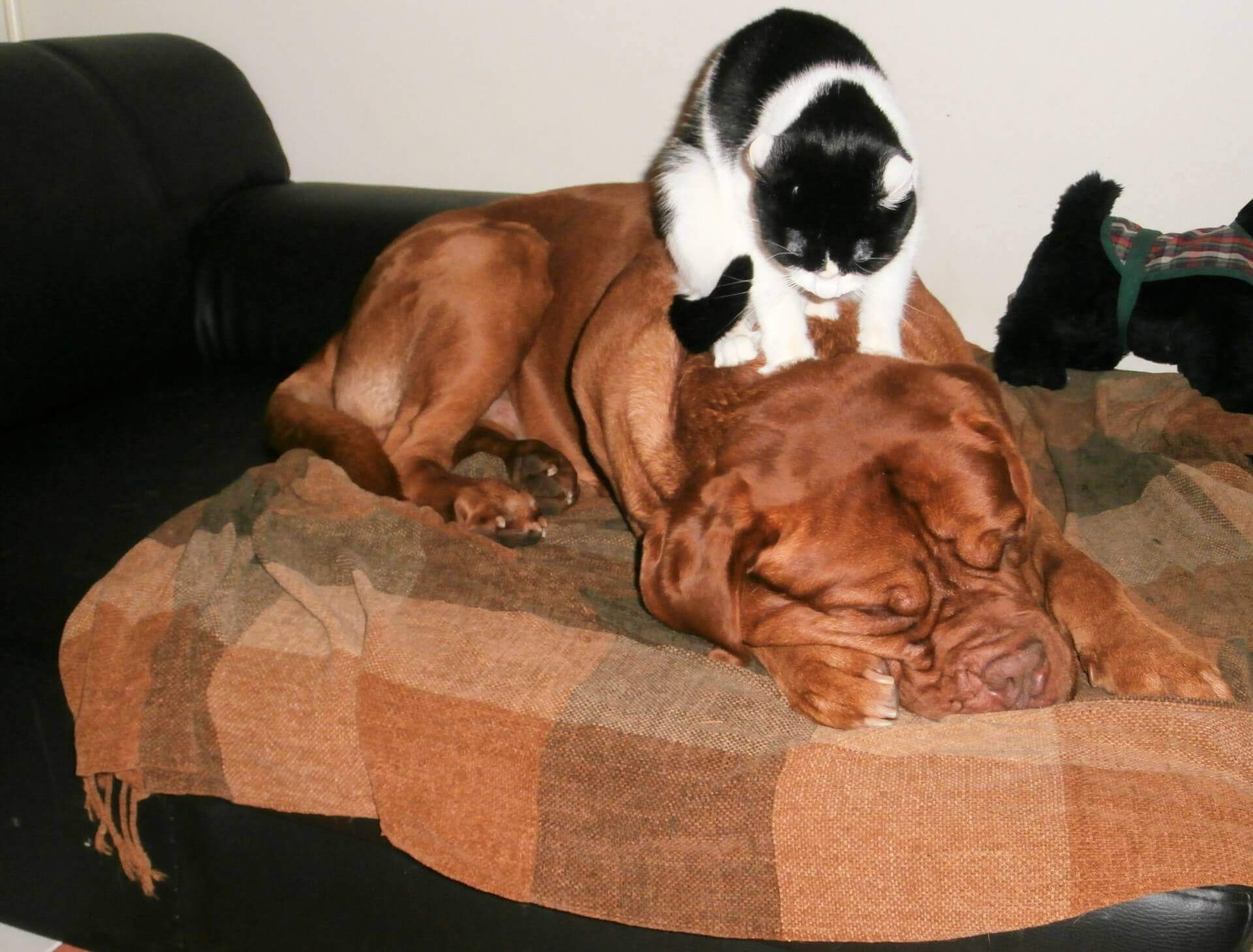
What Is Kneading?
Kneading involves pushing a soft surface with one paw at a time in an alternating movement, there are a variety of reasons your cat may be doing this ranging from marking territory to creating a comfy bed.
However, kneading is most often attributed to when kittens instinctively knead their mother while suckling to encourage milk flow.
It is thought that due to this connection with early life, kneading has (even for older cats) an association with a feeling of happiness and contentment.
Many cats enjoy giving what looks like a kitty massage to soft furniture, blankets or sometimes even your lap or another cat or dog.
While kneading is undoubtedly cute and very endearing, many cat owners are unsure why their cat does it. You may even be wondering if your cat is doing it too much.
Let’s take a look at the possible reasons your cat kneads:
1. Kittens Knead for Milk
It’s likely that your cats kneading habit began as a kitten and has continued on as they have grown up.
Kneading is an instinctive behaviour seen in nursing kittens, they knead their mothers’ stomach in order to encourage the milk flow while they are feeding.
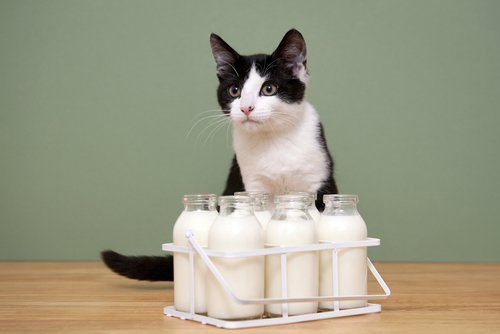
Kittens, and older cats, continue to associate kneading with comfort and the reward of delicious warm milk even as they grow up, so it is thought that cats continue this behaviour well into adulthood to help themselves feel comfortable.
If your cat dribbles when they knead, this may be a sign that they are anticipating milk just as they would when kneading their mother as a kitten.
Some cats also suckle on the surface while they are kneading, another indication of the link to kneading for milk.
You may be wondering why they continue to do this when they don’t actually get any milk but the association of the action and the comfort continues nevertheless, making your cat feel calm and content.
2. Cats Knead To Spread Their Scent & Mark Their Territory
Cats have scent glands in their paws so by kneading an object (or person or animal) they are marking it as their own.
Therefore, when you see your cat kneading they could be using it as a way to leave their scent on an object/ piece of furniture/ blanket, communicating to others that this is their domain.
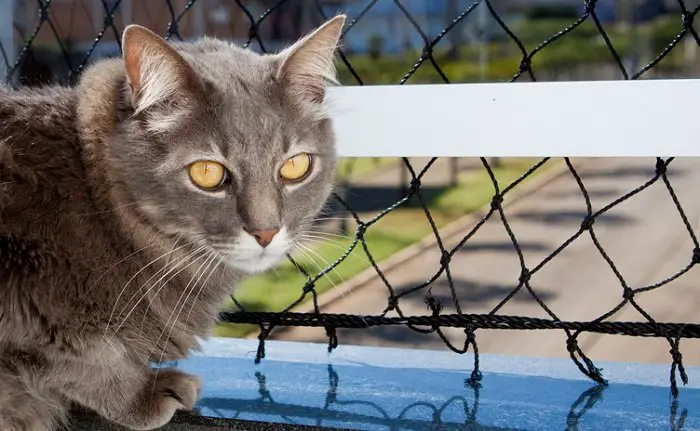
Let’s be honest, if kneading is a way for cats to mark their territory it is considerably more dignified than the dog’s method of urinating on anything and everything!
So, if you see your cat massaging your favourite blanket or they insist on jumping onto your lap to knead, keep in mind it could well be your cat’s subtle way of letting you know who’s the boss.
3. To Check There Is Nothing Hiding in Their Bed
Domestic cats descend from wild cats who would’ve been at home in the forests and fields of the wilderness.
The habit of kneading their bed would have been essential to ensure that no nasty bugs or snakes were waiting beneath the grass to bite them as soon as they lay down for a much-needed nap!
For a wild cat, kneading the space where they would sleep would also help to make the area more comfortable by pressing down the grass and leaves.
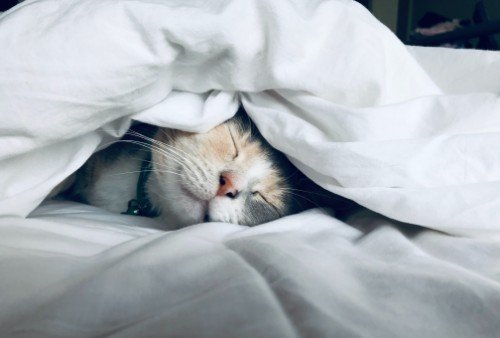
This is probably the reason you see your cat kneading before they settle down to sleep, they are simply making the area safe and cosy before nap time.
This is also one of the reasons why kneading may sometimes involve claws.
This isn’t so nice if they happen to be kneading your leg but is very effective in causing unwanted creatures to flee from your bed!
4. To Calm Themselves
Your cat may knead in order to soothe themselves and relieve stress.
The action can provide them with considerable comfort, something that relates back to what we discussed earlier with the experience they have as kittens.
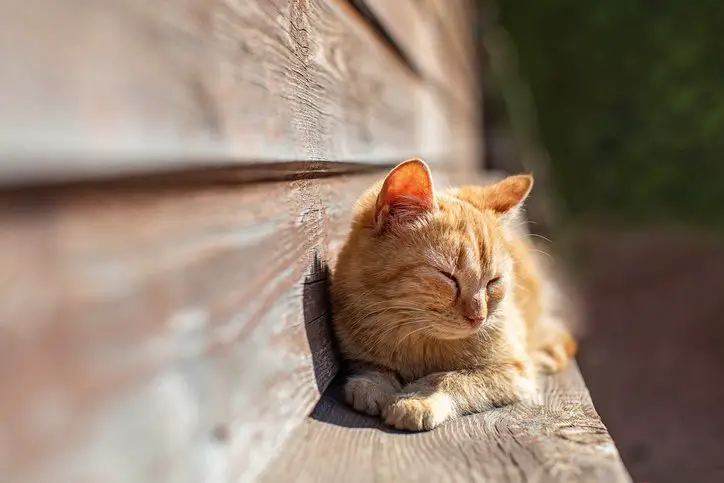
Your cat may also knead to show affection and to display their feelings of contentment, particularly if they knead on your lap or close to you.
5. Females Knead When They Are in Heat
Female cats are known to be particularly pro-active kneaders when they are going into heat (Read our article on feline pregnancy for more information about your cat’s heat cycle).
When they do this, it gives a clear sign to any male cats in line of sight that she is ready to mate.
There are other signs of a female going into heat including; being more vocal, being more affectionate, spraying, grooming more and restlessness.
6. To Help Them Loosen Up
Cats love a good stretch, all that sleeping means that a stretch helps to wake them up.
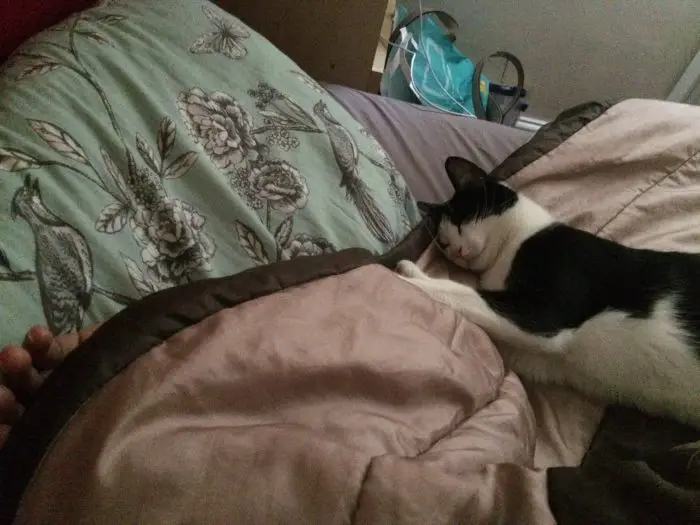
The same is true for kneading, it helps warm up their joints and keep them feeling limber and loose.
If your cat has been sleeping for a while, you may see them knead when they wake up and this could be why.
Can a Cat Knead Too Much?
If you think your cat is kneading excessively, you may want to try to redirect your cat’s attention when they start doing it. Although all cats knead, it can become obsessive so keep an eye on your kitty.
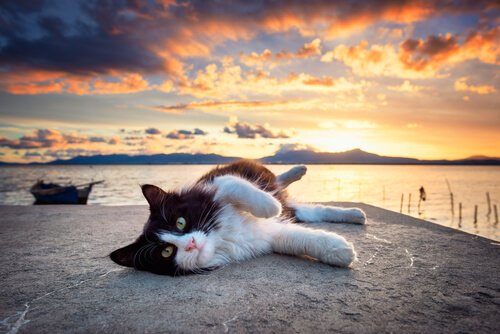
If you think your cat’s habit is becoming compulsive you can try to distract your cat with attention, food or toys.
Help your cat to relax by stroking them. Just remember the behaviour is natural so don’t punish them for it, try to redirect their attention instead.
If you are concerned, a vet check-up can make sure there is nothing amiss with your kitty.
You may be finding your cat’s constant kneading of your lap a bit tedious, particularly if your cat has a tendency to knead with their claws out or are quite heavy with their paws when they are doing it.
Your cat may be trying to show you affection, in which case you can discourage them from kneading on you by moving them off of your lap while continuing to give them attention and spending time with them after you’ve moved them.
If your cat tends to have their claws out while they are kneading, you can help the situation by keeping their claws trimmed to avoid snagging material or scratching you and you can also use a thick blanket on your lap to help protect your legs.
If you’re worried about your furniture you could try to encourage your cat to knead on a dedicated blanket.
Simply move your cat onto the chosen blanket whenever she begins to knead and she will eventually learn that is the kneading spot.
What if My Cat Doesn’t Knead?
We have spoken a lot about why cats knead and whether they can knead too much but your cat may not knead at all.
If you haven’t seen your cat kneading, that’s completely fine too.
Not all cats do it and it’s nothing to worry about.
Your cat most likely uses other behaviours to display their affection and happiness, for example, purring and rubbing their neck against you.
As an Amazon Associate I may earn a small fee from qualifying purchases at no extra cost to you. This helps us run the site, so thanks for your support!

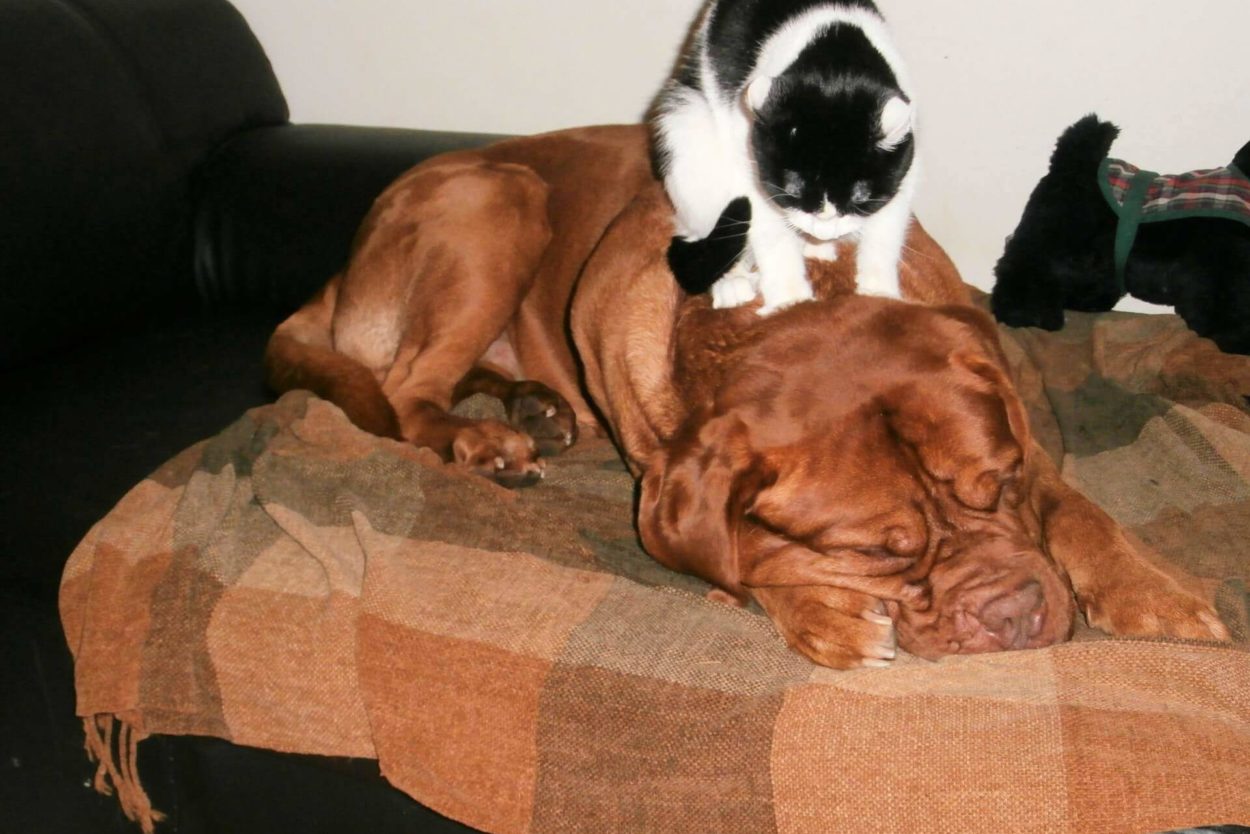
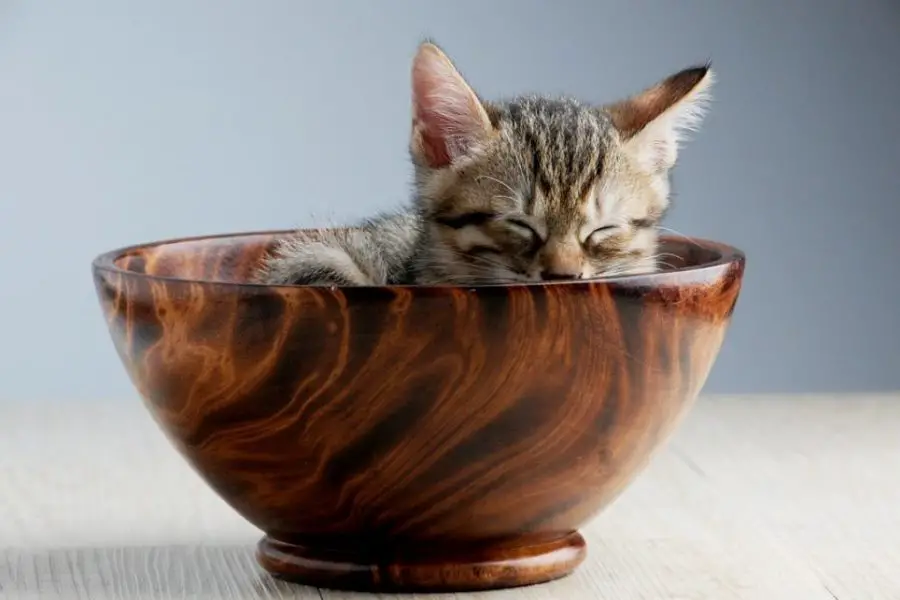
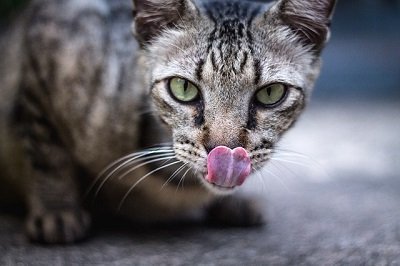
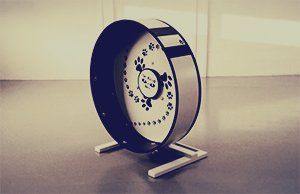
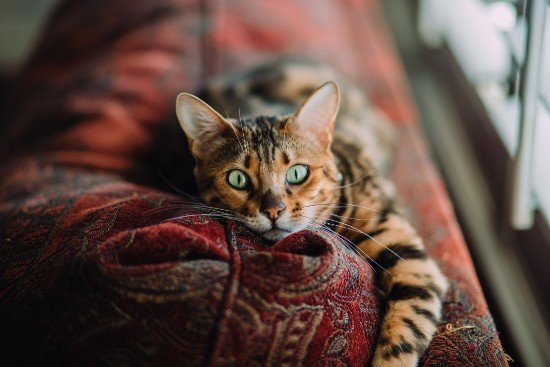
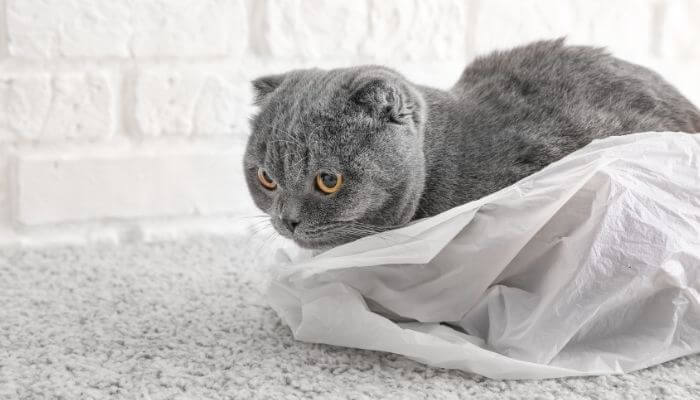
Leave a Comment